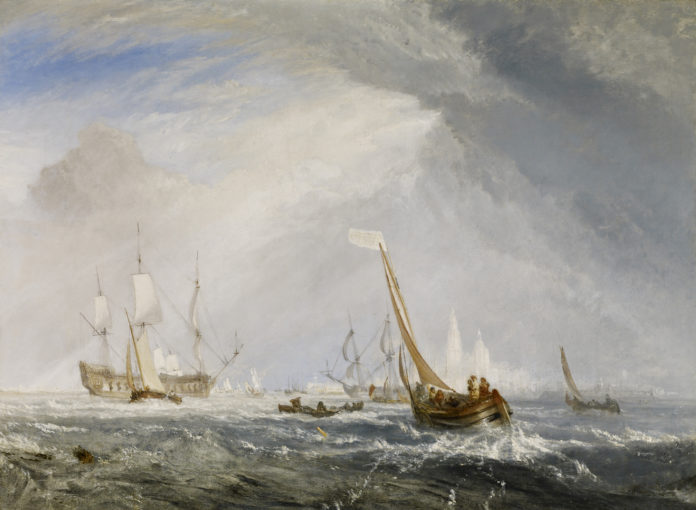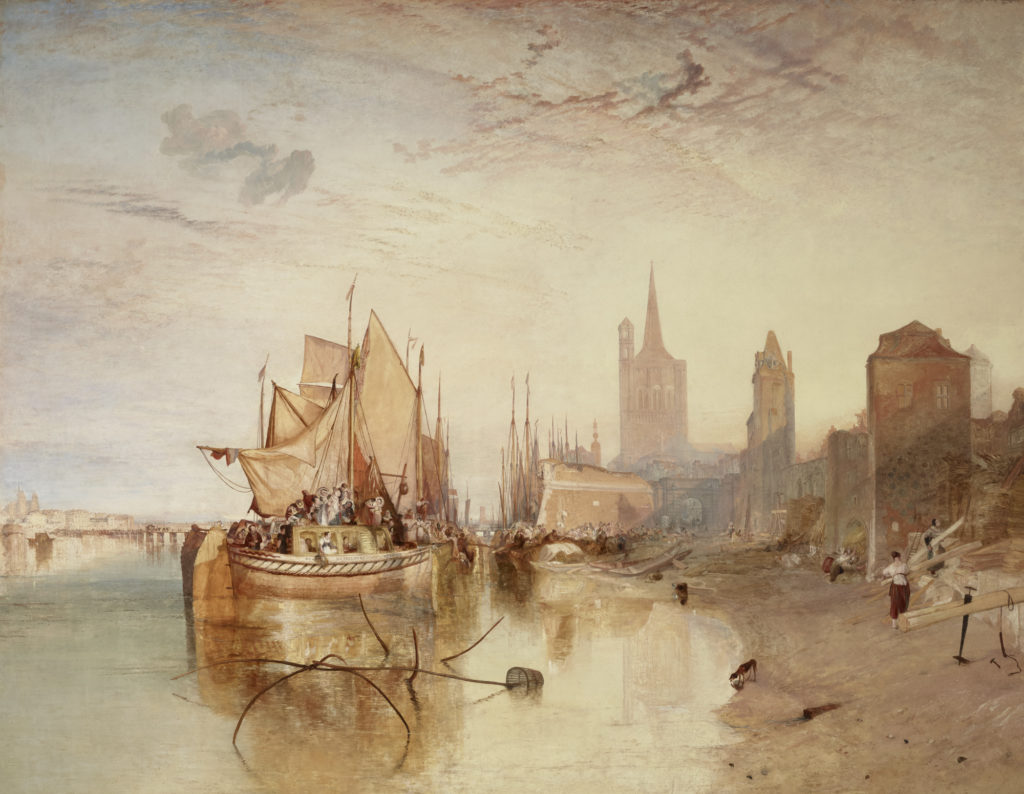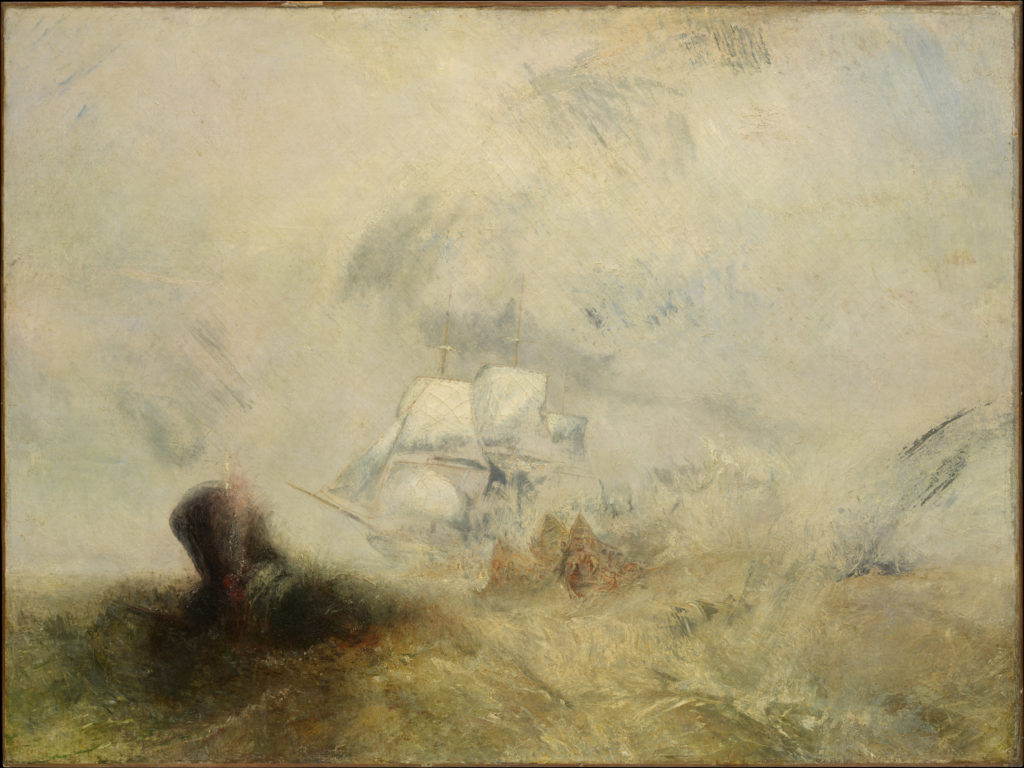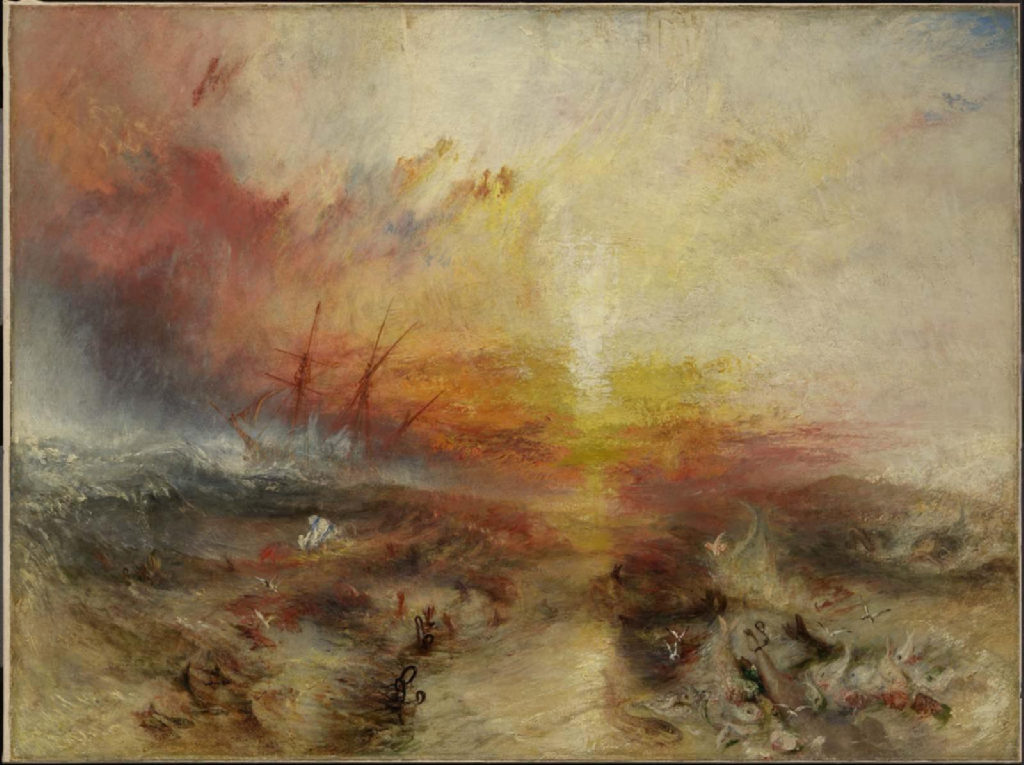
When you fall in love with someone, you develop a love for the things that matter to him or her. As for my friend? Turner’s paintings. One of art’s functions is that it links people, two people certainly, and ideally many people.
By David Masello
My friend used to take me to see his favorite paintings at the Metropolitan Museum of Art in New York City. I would watch him stare and stare, and continue to stare, at the canvases in Gallery 808, artworks he had seen numerous times. Watching him watch the paintings was like attending an act of performance art. Eventually, he would turn to me and say, as if he hadn’t said it many times before, “No one paints light like him. It’s as if the paintings are backlit.”
Every time he announced this to me, I would think, “You can love someone not just for how they appear in this world, but also for how they observe it.” I know no one who observes J.M.W. Turner’s paintings — really, any artist’s paintings — better than that friend, who, alas, is no longer a friend. Once he discovered, as if suddenly uncovering a detail amid the turmoil of paint on a Turner canvas, that I had developed stronger, romantic feelings for him, he chose to vanish — metaphorically into one of the Turneresque fogs so that he wouldn’t feel, as he said, “uncomfortable” around me. I certainly was never as threatening as a Turner storm or inferno, yet he retreated and remains concealed.

What I want to say, to anyone, is that when you do fall in love with someone — be it requited or unrequited — you develop a love for the things that matter to that him or that her. As for my friend? Turner’s paintings. One of art’s functions is that it links people, two people certainly, and ideally many people.
I never liked Joseph Mallord William Turner (1775–1851). Yes, he was eerily ahead of his time in the 1830s and ’40s, painting works that are an amalgam of the realistic and the abstract. You can look at any of his seascapes, portscapes, landscapes, cityscapes and know what is happening and what isn’t. In Turner’s “Whalers” (c. 1845), one of the works in that Met gallery my friend admired, a many-masted ship rides a turbulent sea, with dark, roiling waves seemingly about to wash over the frame into the gallery. A large bruise-colored shape appears like a wound at the left side of the composition, and a chalk-white skyscape, as abstract an application of paint as that by any 20th-century Abstract Expressionist, looms above it all.

But unlike Clyfford Still or Ellsworth Kelly or Joan Mitchell, or any such practitioner in the 1950s and ’60s, Turner’s moments of abstraction seem, to me, sloppy, messy, unorganized. I admire his powerful response to natural elements and his depictions of them, but I rarely want to look for long. His port scenes reveal murky shorelines at low tide, and if you beachcomb in a gallery long enough, you’re likely to detect the stink of sea-weed and rotting fish. His sunsets and sunrises are blinding. His shipwrecks, violent and hopeless. Fogs and rains and cloud formations obscure the beauty of a city skyline, and people rarely appear anywhere, having been subsumed by the elements on display.
Whalers is one in a long series of works by Turner that depict that horrific maritime industry. Apparently, he painted this scene upon reading a true-life tale by Thomas Beale (1807–1849), a ship’s surgeon who recounted his adventures in an 1835 book, The Natural History of the Sperm Whale. Turner’s depiction both adheres to and departs from Beale’s story. The author described how the head of the whale knocked fishermen into the sea, with the justly vindictive mammal “swimming round and round them, as if meditating an attack with flukes.”
Beale’s account of whale hunting’s brutality is riveting. He wrote, “The sea, which a moment before was unruffled, now becomes lashed into foam by the immense strength of the wounded whale, who with his vast tail strikes in all directions at his enemies.” According to the Met’s wall label, it is thought that Turner painted this work for a man who had made his fortune in whale oil. Upon seeing the finished work, however, he gave it back to Turner. Perhaps it was too realistic for the patron — not exactly good publicity for his industry.
My friend’s admiration for Turner affected and infected me. He’s right about the light on canvas. I would not have noticed that key dynamic of Turner had it not been for his vision: Turner does paint light, its dark and bright versions, its illuminating and concealing versions, its violent and calming versions, like no other artist can.
Now, whenever I wander a museum and find a work by him, I feel that satisfying jolt of discovery. I think how much my friend would love this work. I imagine him examining it in silence, standing before it as still as one of Turner’s ships in his windless ports, then turning to me and uttering his familiar phrase: “No one paints light like him.” I would nod in agreement, as I did at the Met, and off we would go to look at more art. It was as if his very body would fill with that painterly glow he had seen, be cast in it. I swear, he would stand taller, exude even more radiance, perhaps put a hand on my shoulder to guide me along, in a rare moment of affection.
Like many art lovers, I prefer to visit museums and galleries alone. It’s difficult to gauge another person’s interest in the art, and I never like to be lectured by someone about the meaning of a painting or the details on which I’m supposed to focus. I know how to look and I know what I want to see. Don’t make me linger longer than I want, and don’t tell me to move on … yet. To go on a date at a museum with someone you don’t know well is to engage in an awkward ballet: you leave the partner, then rejoin him, then hesitate and wind up re-meeting at the bench. That choreog-raphy is always stilted. But with my friend, I was always happy to hear him comment on what we were seeing together. He didn’t lecture or explain unless asked. Rather, he articulated his heartfelt responses. So maybe another indication of love — confirmation that it exists — is your wanting to hear the object of your affection’s responses to art.
That friend is kind of an anomaly, in that he admires representational art as much as abstrac-tion. On the walls of his apartment hang a series of all-white works on paper, their surfaces simply, almost imperceptibly, embossed with shapes. I miss the company of someone able to want to live with those. He “taught” me to admire some of the most minimalist, monumental sculptures anchored in sculpture parks like Storm King or OMI in upstate New York.
After one of our first dinners, at the National Arts Club, I unlocked the gate to Gramercy Park (a privilege of club membership) and brought him in to see an Alexander Calder sculpture. He was able to discern, with only the faintest help from a streetlight, the primary colors coating its parts. As he did that night, and did with all such sculptures, he petted the metal, fingering the rivets as if they were Braille. He evinced an actual physical affection for the sculptures. Even if he didn’t say anything to me, I felt his admiration for them — or his dismissal. And that made me look even more closely at their unembellished I-beams or nebulous, organic forms. And at him, more closely. I admit, we did some heavy petting that night in Gramercy Park — of the sculpture, not of each other.
When some love affairs end, you might be left with letters to re-read or clothing to wear. With my friend, though there never was a consummation of affection, I have something lasting. Now I can look at a Turner and understand that what he painted mirrored, in many ways, what I felt for my friend: a yearning to see clarity inside something complex. My friend is enigmatic, as are Turner’s paintings. His longtime friends describe the “wall” he erects, the emotional distance he maintains while exuding warmth. I was in Chicago with him and one of his old friends when suddenly she steered me away from him. With big-sisterly concern, she confided, “I know that you love him. We both do. But I want to tell you that he has boundaries. And you can’t cross them.”
As I learned from looking long enough into Whalers, its purple bruise is actually the whale’s tail after it has slapped apart a boat of hunters, scattering them into the sea. There is both the nebulous form of the whale itself and the faintest scar of paint that represents the tail, in an oblique profile. Turner painted the tail that exactingly and also that inexactly. In visual art, as in the most powerful poems, the suggested is always more evocative than the actual. The profoundly talented living sculptor Jane Rosen, whose works bridge abstraction and realism, told me once, “Great art produces a question, not an answer. The moment you have an answer, you stop looking.”
Turner hides reality in his abstraction, just as my friend hides passion in his formality. If you look long and closely enough, the light that Turner paints reveals what he wants you to see. No matter how actually or metaphorically dark the subject matter of a Turner painting — a storm at sea, the houses of Parliament on fire, a slave-carrying ship whose captain has thrown his human cargo into the sea — there is light.

Every good artwork inspires both a personal and a universal response. I lost someone who felt like a lover but who never was, and I lost a friend who did not act like a friend at a crucial moment in our friendship. The fallout feels as complicated as the miasma of a Turner scene. My friend had pointed out to me that moment of purple in “Whalers,” that note on canvas representing both beauty and death. He moved his index finger up and down to emphasize it to me. The men who got too close to the whale perished.
My friend and I were often mistaken for a couple. Once at a glamorous party, the hostess said to me, “Your partner has the most radiant smile.” I look at — and into — Turner’s paintings, aware now that all is revealed because of the inner light the painter has supplied. And amid that glow, I still look, too, for my friend. He’s in there, and I wonder if he’ll emerge from it and stand beside me again to look at these paintings. He’s there, backlit, somewhere in the background, amid the radiance. I’ll never stop looking.
> Visit EricRhoads.com to learn about more opportunities for artists and art collectors, including retreats, international art trips, art conventions, and more.
> Sign up to receive Fine Art Today, our free weekly e-newsletter
> Subscribe to Fine Art Connoisseur magazine, so you never miss an issue







